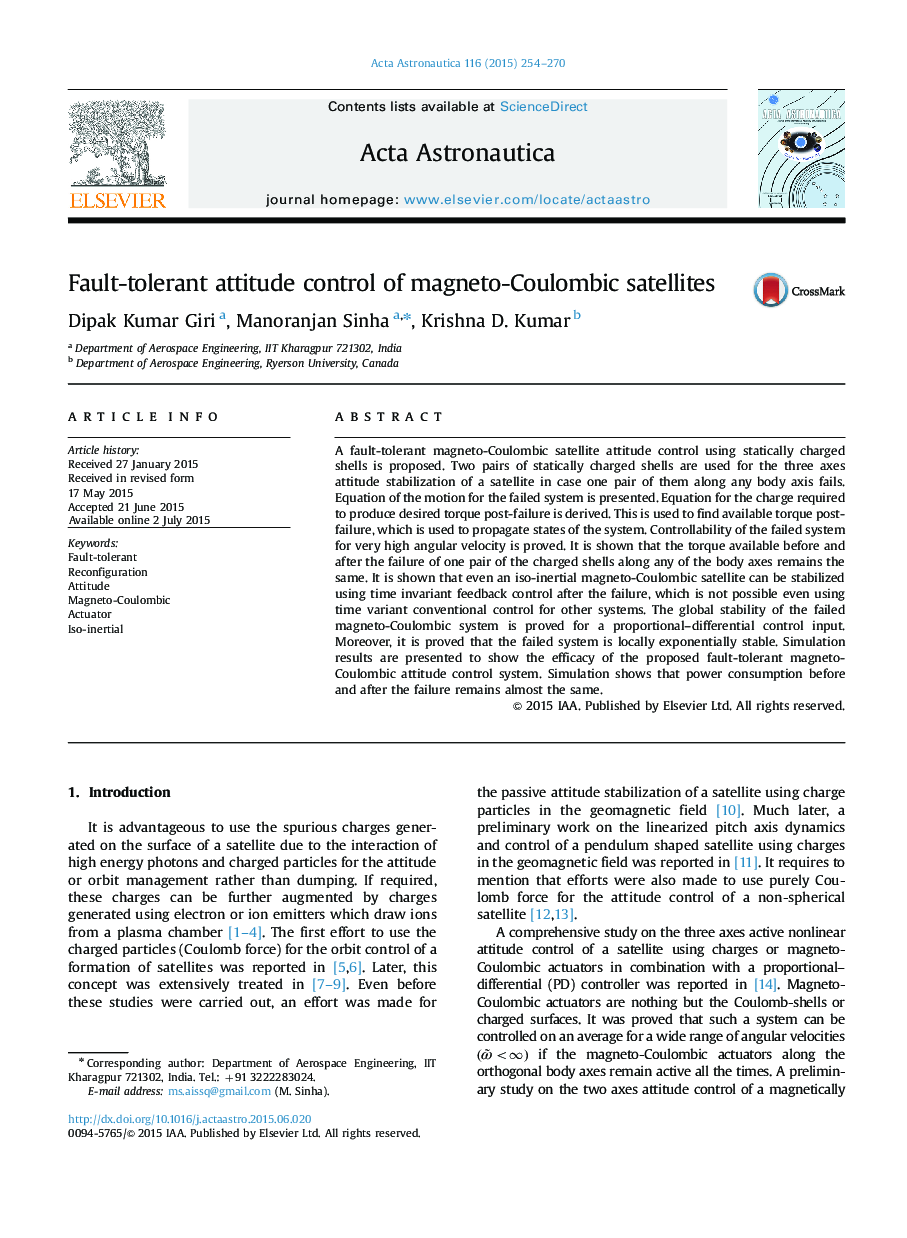| کد مقاله | کد نشریه | سال انتشار | مقاله انگلیسی | نسخه تمام متن |
|---|---|---|---|---|
| 1714299 | 1519938 | 2015 | 17 صفحه PDF | دانلود رایگان |
• Fault tolerant magneto-Coulombic system is proposed.
• Magneto-Coulombic satellite full controllability after actuators failure is proved.
• Global stability of the failed system is proved for PD controller.
• Torque available before and after the failure remains almost same.
• Power consumption before and after the failure remains almost same.
A fault-tolerant magneto-Coulombic satellite attitude control using statically charged shells is proposed. Two pairs of statically charged shells are used for the three axes attitude stabilization of a satellite in case one pair of them along any body axis fails. Equation of the motion for the failed system is presented. Equation for the charge required to produce desired torque post-failure is derived. This is used to find available torque post-failure, which is used to propagate states of the system. Controllability of the failed system for very high angular velocity is proved. It is shown that the torque available before and after the failure of one pair of the charged shells along any of the body axes remains the same. It is shown that even an iso-inertial magneto-Coulombic satellite can be stabilized using time invariant feedback control after the failure, which is not possible even using time variant conventional control for other systems. The global stability of the failed magneto-Coulombic system is proved for a proportional–differential control input. Moreover, it is proved that the failed system is locally exponentially stable. Simulation results are presented to show the efficacy of the proposed fault-tolerant magneto-Coulombic attitude control system. Simulation shows that power consumption before and after the failure remains almost the same.
Journal: Acta Astronautica - Volume 116, November–December 2015, Pages 254–270
